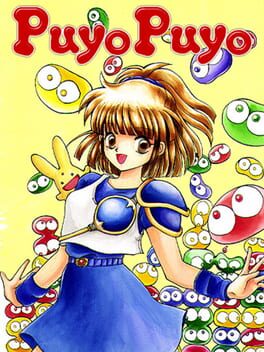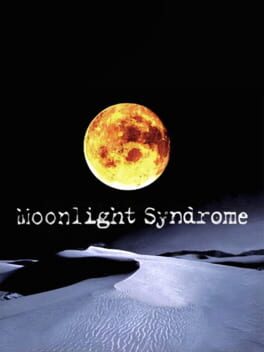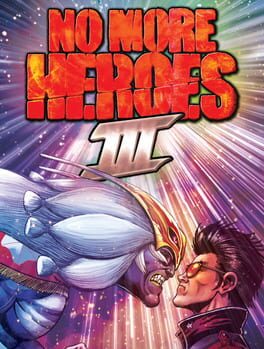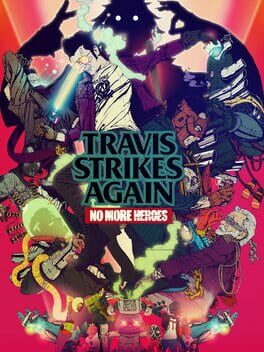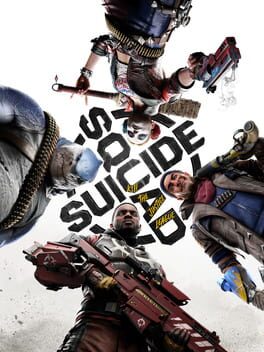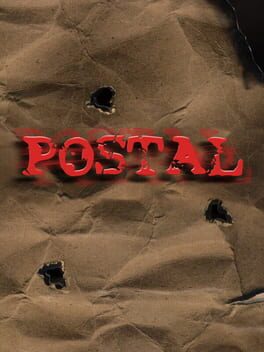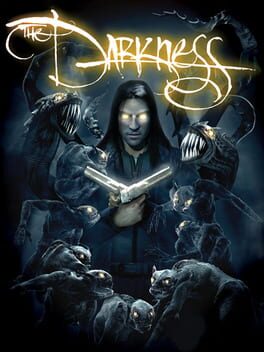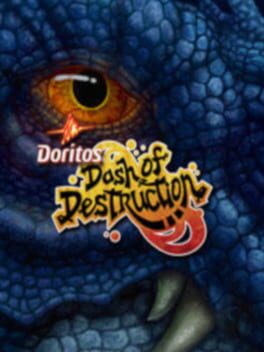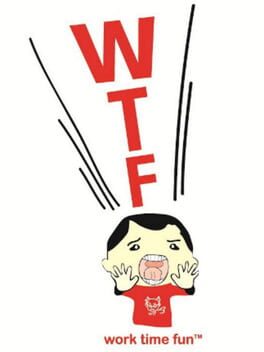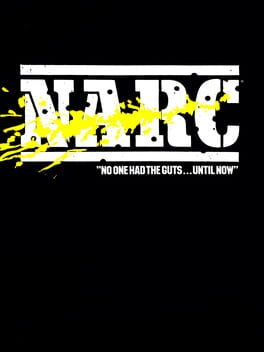95 Reviews liked by Ghenry
Puyo Puyo
1992
I don't think I will ever be able to forgive the West for robbing us of the Mado Monogatari series and its way more successful spin-off franchise , Puyo Puyo. While I will always have a nostalgic fondness for Mean Bean Machine (the first Puyo Puyo I experienced as a kid that weirdly tied a puzzle game with a cartoon whose dubious quality satiated my obsession with the blue blur at the time), the Arle gang and its mythological aesthetic were and always will be the perfect coat of paint to contextualize the absurd premise of competitive block puzzle gaming.
Thanks to the Sega Ages collection, it's now possible to experience Puyo Puyo translated in its glorious original form. Do you get much more out of it that you wouldn't by playing the untranslated version? Not really, besides some cute quips and banter that you can now understand at the start of each battle. But man, do these characters look and sound fantastic in 16 bit. Considering how the franchise would later evolve its presentation and gameplay, the original Puyo Puyo holds a certain quaintness and simplicity to it that makes it such a fun weird little title to revisit.
It's also a stark reminder of how a seemingly simple change to a concept can tremendously improve it and establish a formula for the rest of the series to iterate upon. This little change wouldn't happen until its revelatory sequel tho, Puyo Puyo Tsu, who introduced the ability to counter your opponents attacks, a mechanic the original Puyo Puyo lacked and would devolve every single battle into a "who is the quickest to make a combo that will fill the opponent's screen with a mountain of garbage puyos impossible to eliminate" match.
Better things would come for the Puyo Puyo series, but this is nice, isn't it?
https://youtu.be/FVe1Y6TcARc
Thanks to the Sega Ages collection, it's now possible to experience Puyo Puyo translated in its glorious original form. Do you get much more out of it that you wouldn't by playing the untranslated version? Not really, besides some cute quips and banter that you can now understand at the start of each battle. But man, do these characters look and sound fantastic in 16 bit. Considering how the franchise would later evolve its presentation and gameplay, the original Puyo Puyo holds a certain quaintness and simplicity to it that makes it such a fun weird little title to revisit.
It's also a stark reminder of how a seemingly simple change to a concept can tremendously improve it and establish a formula for the rest of the series to iterate upon. This little change wouldn't happen until its revelatory sequel tho, Puyo Puyo Tsu, who introduced the ability to counter your opponents attacks, a mechanic the original Puyo Puyo lacked and would devolve every single battle into a "who is the quickest to make a combo that will fill the opponent's screen with a mountain of garbage puyos impossible to eliminate" match.
Better things would come for the Puyo Puyo series, but this is nice, isn't it?
https://youtu.be/FVe1Y6TcARc
Moonlight Syndrome
1997
No More Heroes III
2021
No More Heroes III
2021
No More Heroes III
2021
Surface familiarity failing to capture the lightning in the bottle that was NMH1. Words I never expected to utter about a NMH game once again helmed by Suda, but this is the unfortunate reality. Retreaded old familiar ground and innumerous hollow callbacks fail to disguise the lack of purpose and intention in NMH3, giving us instead a sequel closer in tone to NMH2 than NMH1.
Grasshopper fails to effectively manage its visibly low budget, hurting the expressiveness and animation found in previous entries, hastily sidelining the promise of TSA’s cast, and glaringly omitting the presence of traditional pre-boss stages. This last point in particular being the biggest misstep of NMH3, especially when taking into consideration NMH1’s understanding of how illusive the videogame structure is, and how brilliantly it destroys it. Without it, NMH3 has no foundation on which to stand itself on and not even its admittedly entertaining combat can make the uncontextualized arenas feel like anything other than a very impressive tech demo.
Having sat with it for a while now, my conflicting thoughts have a very hard time reconciling with NMH3 and the reasons for its existence. At first glance, NMH3 seems intent on setting aside much of the unorthodox and incisive writing that characterizes NMH1 and TSA in favor of creating a no frills over the top action game built on its own terms and without the constraints and expectations of normal videogame production, that funnels its creativity and passion into much of the aesthetic and presentation that goes above and beyond anything ever seen in a videogame. Watching Travis and Bishop rave on about Takashi Miike, as any two ordinary college roommates would on any given Friday night about their favorite movie, it almost become easy to forgive NMH3’s more immediate failures and appreciate the personality and labor of love behind the development of such a disjointed mess of a game.
On the other hand, while I don’t entirely subscribe to the cynical interpretations of NMH3’s MCU framing of the plot and the social media and streaming services allusions, there is an underlying sense that permeates much of the experience of disinterest, bitterness and alienation in bringing Travis into a world that has long abandoned him. NMH3 is drenched in nostalgic infatuation with the old and the past in a way the previous entries weren’t, almost defiantly so, while also allowing itself to conform to this new reality of media consumption in a shrugging and indifferent manner. This contradiction is best exemplified with Travis trying to reconnect with an old retro game of his childhood, remastered for the modern age, in search of answers that are ultimately never given to him and soon reject his now unfamiliar presence. Travis’ senseless bloodlust is ultimately the same as it ever was, just upgraded and updated accordingly.
In a way, NMH3 represents a sort of alternate finale to the Kill the Past saga, frequently referencing characters and concepts from previous Suda works only to immediately discard them at the expense of the players in the know and closing the door with a plethora of unanswered questions, trapping Travis forever inside No More Heroes, now destined to relive in perpetuity the same bloody uncathartic plot, once a tragedy, now a farse, foolishly hanging on to a static past. It’s hard not to think of MGS4 when playing NMH3, but while it’s understandable why Kojima injected it with so much hostility and resentment towards the player, I fail to decipher why Suda would follow up on TSA’s optimistic catharsis with such a retread for Travis and the series in general. In contrast to MGS4’s tying of all the needless knots, NMH3 instead destroys the series by way of implosion, eating itself from inside out and leaving the remains for whoever is next.
And yet, in its finest hour, I’m left amazed and grinning at how NMH3 manages to bring all its messiness together at the end beautifully in a final showdown that simultaneously acts as a defying FU indictment against the industry that brought it into existence and as a sincere gratitude to the fans who allowed it to happen, one of the most uplifting punk statements worthy of the Grasshopper brand. Regardless of my thoughts here, I ultimately do not think Suda had the intention of pervading NMH3 with such negative emotions, and I do believe he genuinely wanted to make NMH3. The final product however leaves much to be desired, and its meta textual narrative does not make up for the lack of engagement I felt during the story and combat of NMH3. It’s a baffling and contradictory epilogue to TSA, and a weird janky victory lap for the series that has an endearing quaintness to it that makes it hard to hate on.
One thing I can say for certain tho, and that is this is the hardest in the mf paint a NMH soundtrack has ever gone, and you gonna be looking real silly arguing otherwise in the NMH3 discourse to come.
Grasshopper fails to effectively manage its visibly low budget, hurting the expressiveness and animation found in previous entries, hastily sidelining the promise of TSA’s cast, and glaringly omitting the presence of traditional pre-boss stages. This last point in particular being the biggest misstep of NMH3, especially when taking into consideration NMH1’s understanding of how illusive the videogame structure is, and how brilliantly it destroys it. Without it, NMH3 has no foundation on which to stand itself on and not even its admittedly entertaining combat can make the uncontextualized arenas feel like anything other than a very impressive tech demo.
Having sat with it for a while now, my conflicting thoughts have a very hard time reconciling with NMH3 and the reasons for its existence. At first glance, NMH3 seems intent on setting aside much of the unorthodox and incisive writing that characterizes NMH1 and TSA in favor of creating a no frills over the top action game built on its own terms and without the constraints and expectations of normal videogame production, that funnels its creativity and passion into much of the aesthetic and presentation that goes above and beyond anything ever seen in a videogame. Watching Travis and Bishop rave on about Takashi Miike, as any two ordinary college roommates would on any given Friday night about their favorite movie, it almost become easy to forgive NMH3’s more immediate failures and appreciate the personality and labor of love behind the development of such a disjointed mess of a game.
On the other hand, while I don’t entirely subscribe to the cynical interpretations of NMH3’s MCU framing of the plot and the social media and streaming services allusions, there is an underlying sense that permeates much of the experience of disinterest, bitterness and alienation in bringing Travis into a world that has long abandoned him. NMH3 is drenched in nostalgic infatuation with the old and the past in a way the previous entries weren’t, almost defiantly so, while also allowing itself to conform to this new reality of media consumption in a shrugging and indifferent manner. This contradiction is best exemplified with Travis trying to reconnect with an old retro game of his childhood, remastered for the modern age, in search of answers that are ultimately never given to him and soon reject his now unfamiliar presence. Travis’ senseless bloodlust is ultimately the same as it ever was, just upgraded and updated accordingly.
In a way, NMH3 represents a sort of alternate finale to the Kill the Past saga, frequently referencing characters and concepts from previous Suda works only to immediately discard them at the expense of the players in the know and closing the door with a plethora of unanswered questions, trapping Travis forever inside No More Heroes, now destined to relive in perpetuity the same bloody uncathartic plot, once a tragedy, now a farse, foolishly hanging on to a static past. It’s hard not to think of MGS4 when playing NMH3, but while it’s understandable why Kojima injected it with so much hostility and resentment towards the player, I fail to decipher why Suda would follow up on TSA’s optimistic catharsis with such a retread for Travis and the series in general. In contrast to MGS4’s tying of all the needless knots, NMH3 instead destroys the series by way of implosion, eating itself from inside out and leaving the remains for whoever is next.
And yet, in its finest hour, I’m left amazed and grinning at how NMH3 manages to bring all its messiness together at the end beautifully in a final showdown that simultaneously acts as a defying FU indictment against the industry that brought it into existence and as a sincere gratitude to the fans who allowed it to happen, one of the most uplifting punk statements worthy of the Grasshopper brand. Regardless of my thoughts here, I ultimately do not think Suda had the intention of pervading NMH3 with such negative emotions, and I do believe he genuinely wanted to make NMH3. The final product however leaves much to be desired, and its meta textual narrative does not make up for the lack of engagement I felt during the story and combat of NMH3. It’s a baffling and contradictory epilogue to TSA, and a weird janky victory lap for the series that has an endearing quaintness to it that makes it hard to hate on.
One thing I can say for certain tho, and that is this is the hardest in the mf paint a NMH soundtrack has ever gone, and you gonna be looking real silly arguing otherwise in the NMH3 discourse to come.
No More Heroes III
2021
This review contains spoilers
"Too bad there won't be a sequel"- Sylvia No More heroes
Well here we are 3 sequels later and maybe finally the end of the No More Heroes series, and I gotta say its not that good. No More Heroes 1 was a raw, gorey satire which managed to be an exploration of video game stories, a surreal journey into depravity, and just a disgustingly good time. No More Heroes 2 was a failure of a sequel that simply missed the point of No More Heroes 1 along with having just hoards of enemies with overly long health bars. Travis Strikes Again was an incredible spin off that combined Travis with the dark and ominous writing of Suda's past works and a semi autobiographical tale of Grasshopper itself. Considering the change in tone from NMH2 to TSA I assumed the more traditional, action, jokey story of NMH2 was something done without much input from Suda, but it seems that was always the plan for a numbered No More Heroes game all along as 3 has a very similar tone. Its better written and more stylish then 2 but falls into the same trap of devolving into something simultaneously too funny yet also too melodramatic for its own good.
Rather then Travis simply fighting for his own jollies this time he's saving the world and also avenging his friends again (just like Bishop in NMH2). Despite Badman's death being what sets up the story its only brought up twice afterwards and Badman also gets no screen time before his death. Turning into the same shallow misery porn plot engine that NMH1 criticized to begin with. The majority of the boss cutscenes this time are used for meta jokes rather then actual characterization like the first and in general the story is just over whelmingly shallow. A good chunk of the gags are funny this time around, but also don't amount to much memorable. The one exception to this is the Henry cutscenes which are all very ominous and sneak in kill the past references without being overly obvious. The super hero satire NMH3 based it's marketing off of is simple barely present hear. Beyond Fu calling himself a super hero in the cutscene and a returning Destroyman boss there isn't much here that references western comics let alone critiques it any meaningful way. Other story elements are taken wholesale from Travis Strikes again like the retuning VN segments where most of the new characters are nameless dispensers of one punchline, or the returning 2D pixel art Travis segment which in Travis Strikes Again was full of depth but here is a simple one time gag calling back to another gag. There is even another Kamui appearance where he is a random wacky teenager for some reason.
Without a core interesting story to fall back on No More Heroes 3's systems have no ground to stand on the same way NMH 1's shallow gameplay had an excellent story to fall back on. The combat is certainly on the surface better then NMH 1's with the focus turned from pure crowd control to an enemy based system with a more diverse and dangerous enemy set. Yet, by the end game it simply devolves into doing stun lock 200 hit combos on the same enemies as Travis lacks any extra weapons and has only one unlockable combo and only 4 cooldown skills. The open world is back from one and is simply the same thing just with more locations and more busy work fetch quests to do. The one bustling city of santa destroy which houses real people like the job guy and naomi have been turned into lifeless husks with endless copy past aliens who provide almost every side job and Naomi is now a tree with 3 lines of dialog. The side job based grind of NMH1 is broken by the simple fact that mandatory missions and bosses give the player so much money grinding never really has to be done to pay for fights, and all upgrades are paid using a separate currency.
Graphics wise NMH3 has an excellent UI and sense of style hidden behind and ugly every thing else. Shading glitches, clipping, low draw distance, low rez textures that pop in, and a low open world frame rate just scream low budget in a way the blockbuster NMh1 never did on the Wii. NMH1 had simple but clean graphics and a lower frame rate on a large open world was acceptable on the Wii.
This review has been mostly negative, but there still is plenty to like here. The UI and ost are both incredible, and there are funny jokes and even a few good story beats. The combat is quite good for the first 6 ranks even, but for the big Suda written NMH numbered sequel I just can't help but be disappointed by the ugly graphics, shallow writing, and repetitive gameplay. There is a point where low budget tedious gaming punk rock simply travels into being tedious and ugly. Whatever budget Grasshopper actually had it wasn't enough to make the big crazy action game Suda wanted me invested in.
Well here we are 3 sequels later and maybe finally the end of the No More Heroes series, and I gotta say its not that good. No More Heroes 1 was a raw, gorey satire which managed to be an exploration of video game stories, a surreal journey into depravity, and just a disgustingly good time. No More Heroes 2 was a failure of a sequel that simply missed the point of No More Heroes 1 along with having just hoards of enemies with overly long health bars. Travis Strikes Again was an incredible spin off that combined Travis with the dark and ominous writing of Suda's past works and a semi autobiographical tale of Grasshopper itself. Considering the change in tone from NMH2 to TSA I assumed the more traditional, action, jokey story of NMH2 was something done without much input from Suda, but it seems that was always the plan for a numbered No More Heroes game all along as 3 has a very similar tone. Its better written and more stylish then 2 but falls into the same trap of devolving into something simultaneously too funny yet also too melodramatic for its own good.
Rather then Travis simply fighting for his own jollies this time he's saving the world and also avenging his friends again (just like Bishop in NMH2). Despite Badman's death being what sets up the story its only brought up twice afterwards and Badman also gets no screen time before his death. Turning into the same shallow misery porn plot engine that NMH1 criticized to begin with. The majority of the boss cutscenes this time are used for meta jokes rather then actual characterization like the first and in general the story is just over whelmingly shallow. A good chunk of the gags are funny this time around, but also don't amount to much memorable. The one exception to this is the Henry cutscenes which are all very ominous and sneak in kill the past references without being overly obvious. The super hero satire NMH3 based it's marketing off of is simple barely present hear. Beyond Fu calling himself a super hero in the cutscene and a returning Destroyman boss there isn't much here that references western comics let alone critiques it any meaningful way. Other story elements are taken wholesale from Travis Strikes again like the retuning VN segments where most of the new characters are nameless dispensers of one punchline, or the returning 2D pixel art Travis segment which in Travis Strikes Again was full of depth but here is a simple one time gag calling back to another gag. There is even another Kamui appearance where he is a random wacky teenager for some reason.
Without a core interesting story to fall back on No More Heroes 3's systems have no ground to stand on the same way NMH 1's shallow gameplay had an excellent story to fall back on. The combat is certainly on the surface better then NMH 1's with the focus turned from pure crowd control to an enemy based system with a more diverse and dangerous enemy set. Yet, by the end game it simply devolves into doing stun lock 200 hit combos on the same enemies as Travis lacks any extra weapons and has only one unlockable combo and only 4 cooldown skills. The open world is back from one and is simply the same thing just with more locations and more busy work fetch quests to do. The one bustling city of santa destroy which houses real people like the job guy and naomi have been turned into lifeless husks with endless copy past aliens who provide almost every side job and Naomi is now a tree with 3 lines of dialog. The side job based grind of NMH1 is broken by the simple fact that mandatory missions and bosses give the player so much money grinding never really has to be done to pay for fights, and all upgrades are paid using a separate currency.
Graphics wise NMH3 has an excellent UI and sense of style hidden behind and ugly every thing else. Shading glitches, clipping, low draw distance, low rez textures that pop in, and a low open world frame rate just scream low budget in a way the blockbuster NMh1 never did on the Wii. NMH1 had simple but clean graphics and a lower frame rate on a large open world was acceptable on the Wii.
This review has been mostly negative, but there still is plenty to like here. The UI and ost are both incredible, and there are funny jokes and even a few good story beats. The combat is quite good for the first 6 ranks even, but for the big Suda written NMH numbered sequel I just can't help but be disappointed by the ugly graphics, shallow writing, and repetitive gameplay. There is a point where low budget tedious gaming punk rock simply travels into being tedious and ugly. Whatever budget Grasshopper actually had it wasn't enough to make the big crazy action game Suda wanted me invested in.
Postal
1997
Long before Mercurystream made Metroid games they used to make Castlevania games. In 2010 rebooted and reinvented the Castlevania brand to be more in line with popular action games at the time like God of War. This is similar to 1997 where the Castlevania series was turned into an non-linear platformer with rpg elements following both the exploration and rpg trends of the ps1 era as tight and short 2D platformers fell out of favor during the previous generation. Castlevania had certainly experimented with non-linear exploration based gameplay before in Simon's Quest and vampire killer but it had also experimented with 3D action gameplay in Lament of Innocence.
As a God of War clone Lords of Shadow is competent but unambitious. You have your light and heavy attacks, QTE finishers, climbing, and light platforming. As the game goes on you unlock more varied combat options, but the low difficulty and ease of parries makes them mostly superfluous. The real strength here comes in the beauty and diversity put into the environments. Nearly every area has some unique twist as you travel through twisted forests, stark mountains, ancient ruins, gothic castles, and dead deserts. It really splits the difference between the more spooky and gothic look of classicvania with the gaudy interiors of SOTN. Really in the end Lords of Shadow doesn't end that much differently then SOTN. Both being radical gameplay shifts with functional but ultimately uninteresting gameplay carried mostly by excellent visual design. The difference being that SOTN with its sprite based graphics stands out infinitely more on the PS1 while Lords of Shadow blends in with the dearth of God of War clones. Despite this Lords of Shadow still stands out in its generation with its striking and high quality environmental design.
As a God of War clone Lords of Shadow is competent but unambitious. You have your light and heavy attacks, QTE finishers, climbing, and light platforming. As the game goes on you unlock more varied combat options, but the low difficulty and ease of parries makes them mostly superfluous. The real strength here comes in the beauty and diversity put into the environments. Nearly every area has some unique twist as you travel through twisted forests, stark mountains, ancient ruins, gothic castles, and dead deserts. It really splits the difference between the more spooky and gothic look of classicvania with the gaudy interiors of SOTN. Really in the end Lords of Shadow doesn't end that much differently then SOTN. Both being radical gameplay shifts with functional but ultimately uninteresting gameplay carried mostly by excellent visual design. The difference being that SOTN with its sprite based graphics stands out infinitely more on the PS1 while Lords of Shadow blends in with the dearth of God of War clones. Despite this Lords of Shadow still stands out in its generation with its striking and high quality environmental design.
